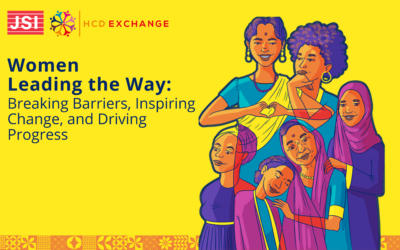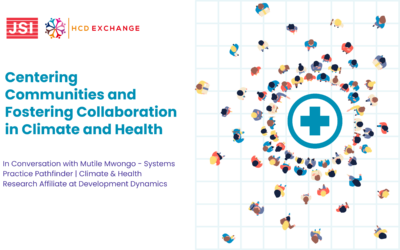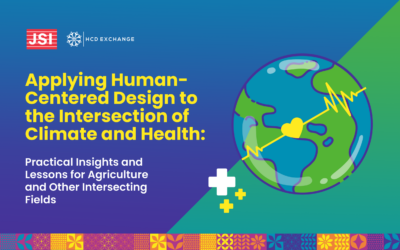In the realm of humanitarian aid, the push for sustainable, locally-driven solutions has never been more urgent. What if the answers to communities’ most pressing challenges lie within the communities themselves? The Community-Led Business Model (CLBM) offers a transformative approach, empowering local communities to design, produce, and distribute solutions tailored to their unique needs.
This innovative model shifts the narrative of humanitarian response by placing ownership and leadership directly in the hands of the people it serves. A recent initiative in Ethiopia’s East Hararghe and Gambella regions, led by ThinkPlace Kenya in collaboration with the International Organization for Migration (IOM), Innovation Norway, Norwegian Church Aid, and NGAT, showcased the potential of the CLBM to drive impactful, sustainable change.
By addressing the dual challenges of open defecation for children and incontinence among adults, this project not only tackled immediate health and environmental risks but also provided a path to dignity and resilience. Through community-led production and distribution of sanitation solutions, the CLBM demonstrated a new way forward – reducing reliance on donor aid and fostering local ownership.
The Challenge: Designing a Sustainable Business Model to Address Sanitation Needs Within Humanitarian Settings
In the regions of East Hararghe and Gambella, access to proper sanitary products is a persistent issue, especially for managing children’s faecal waste and ensuring dignity for adults experiencing incontinence. These challenges are not just health concerns – they carry significant social stigma and limit economic opportunities. Instead of relying on external aid, the project chose a ground-breaking approach: putting communities in charge of creating their own solutions.
Communities as the Drivers Of Change
At its heart, the CLBM is about giving communities the tools to lead their own development by leveraging local resources and knowledge, CLBMs foster ownership, engagement, and self-organization among community members. Here are the key elements of the Community-Led Approach in Ethiopia:
- Engaging the Community from the Start: The project began by conducting in-depth consultations with community members to fully understand their needs and challenges related to incontinence. This participatory approach ensured that the solutions were not only practical but also culturally appropriate and widely accepted by the community.
- Securing Resources and Partnerships with private entities and local companies: Overcoming financial and technical barriers was essential for the project’s success. By securing backing from Innovation Norway and IOM, the initiative gained the necessary funding and guidance. These organizations also identified and collaborated with local partners to provide technical training and establish the systems required to empower communities.
- Striking the Right Balance Between Support and Ownership: Maintaining community ownership was a cornerstone of the project’s strategy. While external partners provided critical support and resources, the emphasis remained on ensuring that the communities retained control over decision-making and implementation. This balance was essential for the long-term sustainability of the model.
- Building Skills, Creating Pathways: A comprehensive training program equipped community members with essential skills in production, business management, and marketing. This initiative not only enabled the production of high-quality sanitation products but also created job opportunities and fostered entrepreneurial growth.
- Breaking Stigmas Through Awareness: Dedicated awareness campaigns addressed the stigma surrounding incontinence and hygiene issues. By encouraging open conversations, these efforts fostered greater understanding and acceptance within the community, helping to normalize discussions about sensitive topics.
The Sanitation for All Project aims to tackle the critical challenges faced by communities dealing with incontinence and the management of children’s faecal waste. Through a community-led business model, this initiative showcases how engaging local communities can transform these challenges into long-term, sustainable solutions.
When designing such a model for the future, the following should be considered;
- Flexibility and Responsiveness: To ensure ongoing success, the project must be adaptable, adjusting strategies based on community feedback and evolving needs. This approach will ensure that solutions remain effective and aligned with changing challenges.
- Monitoring and Evaluation: Strong monitoring and evaluation systems will be essential to track progress, measure impact, and identify areas for improvement. These insights will help refine the initiative and inform scalable implementations.
- Scaling for Greater Impact: The project aims to expand its reach by increasing production capacity and introducing new products, such as sanitary pads. This will address broader needs, create additional jobs, and strengthen regional economies. Replicating the model in new contexts will help deliver sustainable, community-driven solutions.
Minimum Viable Solution (Mvs): a Scalable Approach for Immediate Impact
The MVS served as a foundational step in implementing the Community-Led Model for local diaper (adults and children) production in Ethiopia. Designed to deliver rapid results in challenging operating environments, the MVS aimed to address urgent sanitary needs while building the capacity and infrastructure necessary for long-term scalability. The success of the MVS relied on several critical components, facilitated by the support of IOM and NCA teams as below:
| Formation of Production Cooperatives |
In Gambella and East Hararghe, the establishment of production cooperatives was carried out with the support of the IOM field office in East Hararghe and the NCA field office in Gambella. Key assistance was also obtained from the National Cooperative Agency to facilitate the formation of these production groups. |
| Capacity Local Production Cooperatives | NGAT, the project’s current solution partner, successfully conducted capacity-building activities in both locations. These efforts enhanced the cooperatives’ sewing and business management skills, resulting in the production of high-quality products, as confirmed by NGAT. |
| Production of Adult and Baby Diapers | Building on the sewing training provided by NGA, local production groups in both Gambella and East Hararghe successfully produced high-quality adult and baby diapers. |
| Distribution and Sale of Products | In Gambella, the production groups successfully distributed and sold part of their output. Out of 35 adult diapers and 132 baby diapers produced, 2 adult diapers were sold to individuals with incontinence, and 67 baby diapers were purchased by caregivers of children under the age of three. |
| Feedback from Potential B2B Customers and Central Function Partners | In both Gambella and East Hararghe, various B2B and B2C customers collaborated with the production groups, offering valuable feedback and helping to establish key distribution channels as outlined. |
During the project implementation 228 adults and 132 children under 3 received diapers while 130 adults and 332 children for the piloting phase. As the implementation platforms, 3 production cooperatives were formed across Gambella and East Hararghe.
The MVS served as a proof-of-concept for a simpler, adaptable version of the Community-Led Model. The insights gained during this phase informed our roadmap for the next 6–12 months, emphasizing the importance of:
- Scaling the model to reach more beneficiaries.
- Enhancing community training to improve production efficiency and quality.
- Strengthening market linkages to ensure economic viability.
Key Outcomes and Lessons Learned
The community-led approach has produced significant outcomes, emphasizing the impact of local involvement in addressing complex issues:
- Improved Quality of Life: The project had a direct, positive effect on the dignity and well-being of beneficiaries, especially those previously marginalized by stigma. Community members, particularly those impacted by incontinence, regained confidence, improved hygiene, and enjoyed greater comfort in daily life.
- Economic Empowerment: The establishment of local production facilities created stable income opportunities, reducing logistical costs and allowing the community to generate revenue within the region. This not only met urgent sanitation needs but also contributed to regional economic growth by creating jobs and supporting local businesses.
- Social Cohesion: The project promoted social cohesion by facilitating open conversations on sensitive topics like incontinence and hygiene, reducing stigma and fostering greater acceptance. This helped strengthen community bonds and build trust.
- Long-term Engagement: Continuous engagement with the community was key to adapting solutions to evolving needs and ensuring the project’s continued effectiveness and relevance over time.
- Fostering synergies between private entities, local businesses and communities was essential to the project’s success. The collaboration between businesses like NGAT (a local manufacturer of sanitary solutions), ThinkPlace (a private innovation firm) and the community combined technical expertise with local needs, resulting in effective, practical solutions. This partnership established a sustainable growth ecosystem, though sustaining it remains challenging.
While the project achieved success, it also encountered challenges, especially related to financial and technical limitations. Adequate resources were necessary for scaling, and it was crucial to balance community ownership with external support for long-term sustainability. Ensuring community-led decision-making while drawing on external expertise was vital for the project’s long-term scalability and sustainability.
A Model for the Future
The Community-Led Business Model represents a promising approach to tackling humanitarian challenges by placing local communities at the heart of development processes. The partnership between Innovation Norway, IOM Ethiopia, NCA, NGAT and ThinkPlace Kenya exemplifies how CLBMs can effectively address pressing health issues, empower communities, and promote sustainability through community led initiatives. By learning from this initiative and adhering to its key principles, organizations can replicate this model across diverse humanitarian contexts, strengthening the resilience and well-being of vulnerable populations. This project demonstrates that CLBMs are not only immediate solutions but also lay the foundation for building stronger, self-sufficient communities. By tapping into local skills and leveraging local and private entities partnerships, the CLBM transforms challenges into opportunities and foster a sense of ownership. It is a blueprint for creating resilient communities that can thrive despite adversity. As we continue to explore and implement these innovative approaches, let us prioritize community engagement and empowerment to create lasting impacts in humanitarian work. Imagine applying this model to other critical areas like water management, food security, and education – the possibilities are endless.
As humanitarian actors, we have a unique opportunity to rethink how we approach aid in a sustainable manner. By trusting and empowering communities, we can create lasting, meaningful change.
What’s your take on the community-led model? Have you seen similar approaches succeed elsewhere? Share your thoughts below!
If you need help developing these ideas, or for further details, please don’t hesitate to contact us – oliver.muchiri@thinkplace.co.ke




